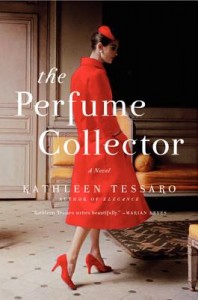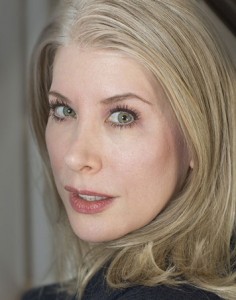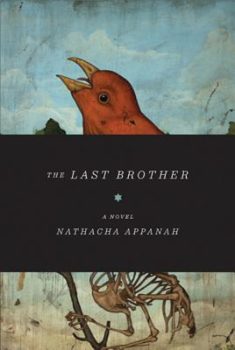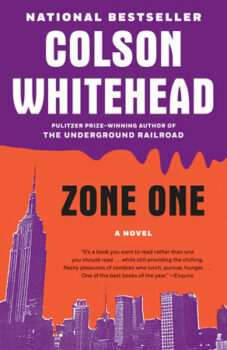 Kathleen Tessaro’s fifth novel should be read in bed, propped on pillows, or beneath a beach umbrella, or in a bubble bath. The author invites the reader into a fashionable world where scent and apparel wield transformative magic. She tells the story of two women linked by a secret only one knows; she stitches together two timelines, interweaves two plots, and tailors this work like a vintage designer dress.
Kathleen Tessaro’s fifth novel should be read in bed, propped on pillows, or beneath a beach umbrella, or in a bubble bath. The author invites the reader into a fashionable world where scent and apparel wield transformative magic. She tells the story of two women linked by a secret only one knows; she stitches together two timelines, interweaves two plots, and tailors this work like a vintage designer dress.
The book opens in 1955: Eva d’Orsey, mistress of a cosmetics magnate and former muse to a perfumier, is dying and has just made final arrangements for her estate. Within the next pages, young Grace Munroe of London receives news of a bequest from a recently deceased stranger—one Madame d’Orsey of Paris. Unraveling the mystery behind Grace’s inheritance, Tessaro alternates between flashbacks to Eva’s dramatic experiences in occupied Paris and after the war, and Grace’s romantic adventures in Paris. Eva’s story of endurance and ingenuity might stand alone in a different and shorter novel, but the author has previously expressed admiration for Tom Stoppard’s and A.S. Byatt’s ability to tell a story “in two time frames, folding together to build to a single, powerful climax.” Homage to that influence is apparent in Tessaro’s use of double heroines separated in time but joined by carefully plotted circumstance.
Here, the author uses the device of one storyline in two folded-together time frames to craft a mid-twentieth century historical romance, a double fairy tale. Orphaned Eva progresses from rags to riches as this unusual looking duckling turns into a swan. Through hard work, charm, talent, and intelligence she transforms herself from chambermaid to celebrated fashion plate, lifts herself from poverty to luxury. She cultivates useful alliances with men, holds a tragic secret close, and upon her death plays fairy godmother to Grace’s Cinderella. For Grace, news of the bequest comes at an opportune moment as she has just discovered her husband’s infidelity. She flees her marital woe, crossing the channel on the first airplane flight of her life to meet handsome young attorney M. Edouard Tissot. He escorts her to the flat she has inherited in the Place des Vosges and throughout her enchanted, transformative sojourn in Paris.
This is not the author’s first use of fairy tales as inspiration, nor her first reprise of the Cinderella story. Speaking of her debut novel, Elegance, she says in a publisher interview, “I think we all secretly long to be Cinderella…to be transported from a dull life of endless drudgery by…the wave of a wand.” Although Tessaro continues, saying, “I think that in real life, women have to be their own fairy godmother,” the degree of ease in Grace’s transformation is somewhat problematic. Eva serves as fairy godmother to such an extent that Grace’s Cinderella does not really have to work to make her own magic. Perhaps in choosing to smooth the way for Grace, Tessaro aims to tap and satisfy the universal yearning for a life-changing romantic encounter. Grace’s story requires the reader to suspend disbelief, as one does when awakening early to watch a prince wed a commoner several time zones away, trusting for the duration of the broadcast that glass slippers fit, and that the couple will live happily ever after, immune to ennui and heartache.
But though Grace’s enchanted metamorphosis—complete with French coiffure and black Balenciaga gown—occurs as effortlessly as romantic fantasy, the more satisfying magic here, and the novel’s organizing theme, is the author’s exploration of both heroines awakening to worldly, sensory experience. When M.Tissot and Grace—over a bistro meal—compare British and French food, they debate the meaning of the English expression come to your senses. She suggests it means to be reasonable. He counters:
Perhaps it’s an invitation. Maybe we need to literally come to our senses, to return to our sense of taste, touch, sight, smell, hearing and find sustenance in them…Our senses have the power to truly transport us but also to ground us. Make us human.
Tessaro offers readers such an invitation. Through the savor of food and wine, the seductive texture of silk and satin, and above all fragrance and the evocative alchemical power of the ingredients in a perfume’s formula, she transports us and also grounds her characters. Olfactory experience and memory, so often over-looked, serve as a central, evocative narrative motif, and the craft and technique necessary for creating fine perfume become integral plot devices. The single climax of the double story line hinges on Eva’s and Grace’s encounters with Madame Zed, a real woman of mythic proportions credited with creating iconic scents including Mon Peche and Arpege. Madame Zed speaks the perfumier’s language of scent, “the vocabulary of feeling and memory,” and understands the genius required to concoct a resonant fragrance. Grace’s discovery of a long hidden formula for such a fragrance— “an intoxicating blend of warm sweat and tender young skin” —provides the initial clues for the literal trail of scent Grace follows to solve her mystery. And although the reader anticipates the secret link between the women long before the unsuspecting Grace does, neither foreshadowing nor one’s intuition spoils the story’s page-turning charm. Tessaro’s early training as an actress and her skilful manipulation of narrative structure contribute to a satisfying conclusion and an entertaining read.
 Readers of The Perfume Collector may feel tempted to visit the nearest fragrance counter and spritz on samples. Or, lacking a fairy godmother to underwrite hopping the next plane to Paris, to further explore the world of perfume by reading one of the recent non-fiction books on the topic: The Diary of a Nose, by Jean-Claude Ellena, or The Perfume Lover, by Denyse Beaulieu. But the simplest and best course of action of all might be to contract a mild case of flu, chill some champagne, and settle back against the pillows with this stylish, well-crafted novel.
Readers of The Perfume Collector may feel tempted to visit the nearest fragrance counter and spritz on samples. Or, lacking a fairy godmother to underwrite hopping the next plane to Paris, to further explore the world of perfume by reading one of the recent non-fiction books on the topic: The Diary of a Nose, by Jean-Claude Ellena, or The Perfume Lover, by Denyse Beaulieu. But the simplest and best course of action of all might be to contract a mild case of flu, chill some champagne, and settle back against the pillows with this stylish, well-crafted novel.
Further Links and Resources:
- For more on Kathleen Tessaro and her work, visit the author’s website.
- You can also read a May 2013 interview with Kathleen Tessaro on the fragrance blog Olfactoria’s Travels.
- And be sure to check out the Nosy Girl blog for a literary approach to fragrance, smells, and the stories they tell. Also, super cool nebula portraits with fiction writers Ariel Djanikian, Dean Bakopoulos, Jesmyn Ward, Natalie Bakopoulos, Sharon Pomerantz, V.V. (Sugi) Ganeshananthan, Valerie Laken, Zachary Watterson, and more.





